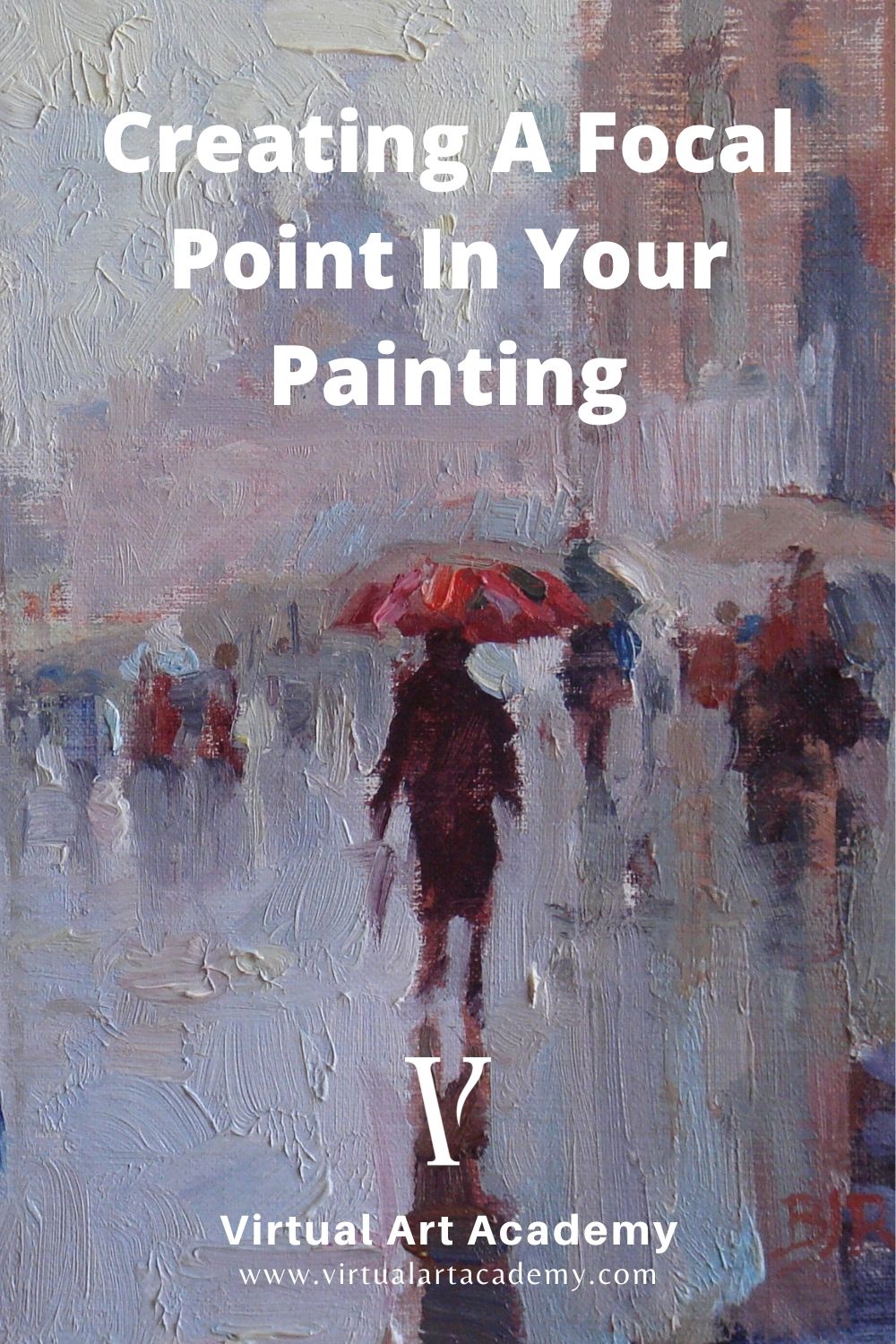
(Get free painting tips and plein air painting techniques sent straight to your inbox or on my social media.)
What is a focal point in art?
The focal point in art is a key point of interest in your painting that you want your viewers to notice first. It is the most interesting point in the painting, and should help the viewer to understand why you wanted to capture the scene.
Having A Focus In Your Work
Many beginners look at a scene and try to paint all of it, leaving the painting without any focus. You need to direct your viewer to one part of your painting and make that area more interesting.
If you are painting a landscape with a mountain, a house with a road leading up to it, and perhaps some people on the road, you need to decide which is your focal point. Is it the mountain, the house, or the people? What is your painting really about?
This is called the focal point. The focal point in art is one of the easiest and fastest ways to create a composition that will keep your viewers interested, and lead them to the subject of your painting.
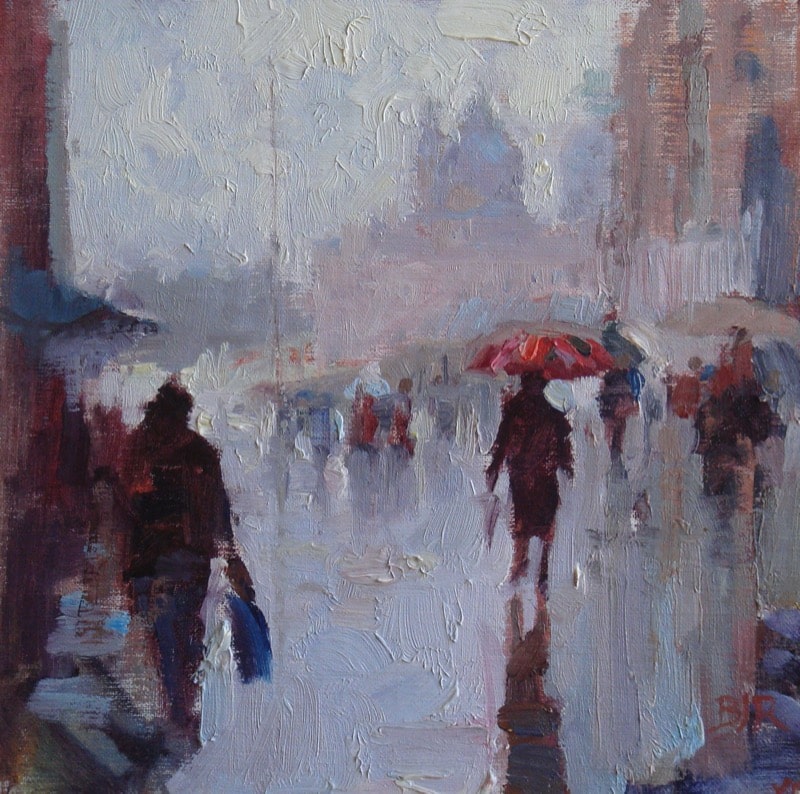
In “A Rainy Day In Venice” you can immediately see what inspired me to create this painting. No prizes for guessing that I was attracted by the saturated red of the umbrella on an otherwise grey day. Instant focal point in your art!
How Many Focal Points Should I Add to My Art?
You only need one primary focal point. For example, when painting marine scenes, if you are interested primarily in the ocean, tone the sky down and simplify it so it does not detract from the ocean. Conversely, if you are primarily interested in the sky, tone down the sea.
For beginners, practice getting one good focal point in your art, which will instantly help you improve your compositions.
As you increase your skills you can add more focal points, but always make sure you have one focal point that stands out above the others. You do not want to dilute the main focal point, but secondary focal points help to keep the viewer’s eye moving around the painting and keeps them interested.
5 Ways to Create a Focal Point in Art
Method 1: Use lines to lead the viewer to your focal point
The simplest way to create a focal point in art is to walk them to it using lines. In “Carmel Lagoon” I used the receding water, the lines of the hills, and the direction of the clouds to draw the eye to the walkers on the beach.
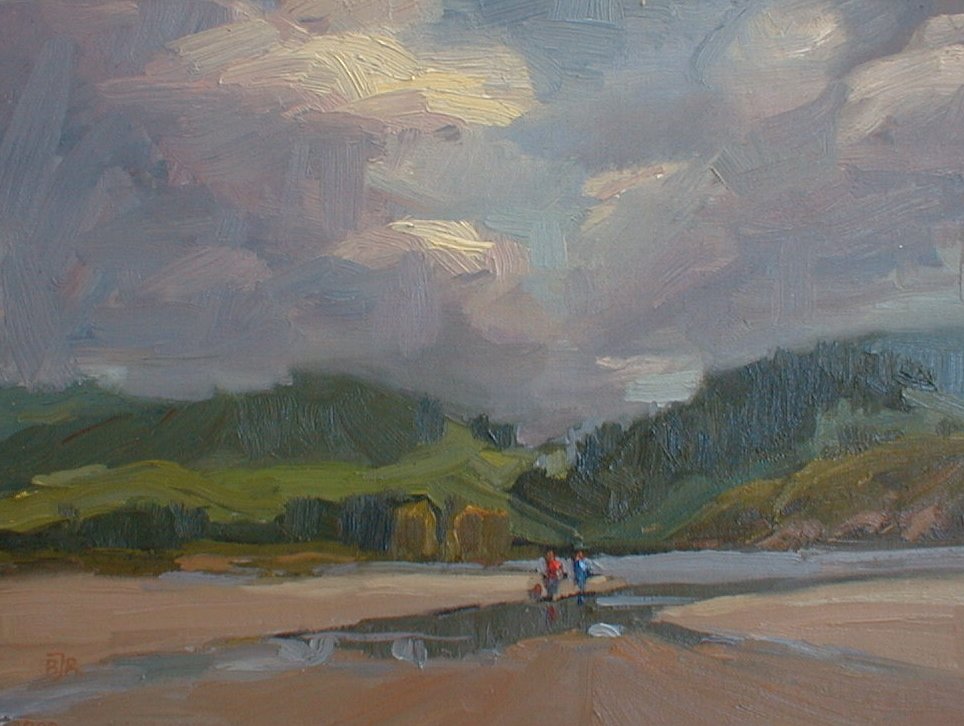
Method 2: Make the focal point the darkest or lightest part of the painting
Make the focal area lighter than its surroundings if possible, since the eye is attracted to light. Alternatively if the scene is mostly bright, make the focal point much darker, as in this painting “Marrakesh Alley“. It was such a bright day the buildings were brilliantly light, so I painted the figures in a contrasting dark.

Method 3: Use highly saturated color in contrast to a neutral background
Adding one or two points of saturated color make your focal point pop out from the rest of the painting. In “Bird of Paradise” the background is a neutral grey, but the flower head itself is painted in highly saturated orange and red.

Method 4: Keep the warmest and coolest colors together
In this painting “San Simeone Piccolo, Venice, Italy” I was drawn by the warm whites on entrance and the cold blue/green of the dome. There is no argument that the church itself is the focal point. (See contrast of temperature)
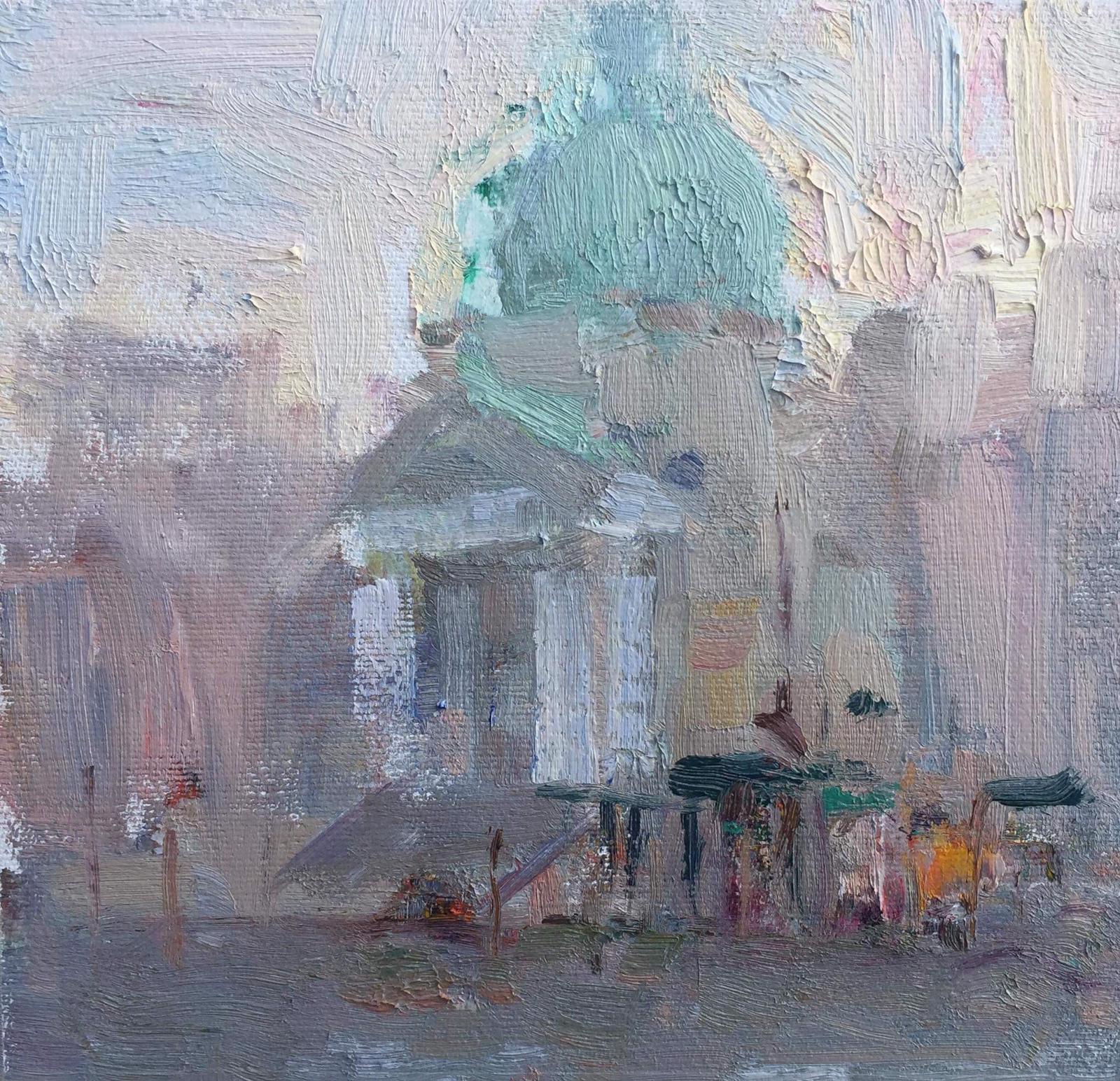
Method 5: Place the focal point a third way across or down the painting
Position focal points in art approximately one-third across or down the painting, or at the golden ratio, or at the rabatment of the rectangle. In “Pianello Roses” I placed the beautiful rose bush in the left third of the painting. Depending on the subject of the painting you could also place it in the last third, bottom third or top third.
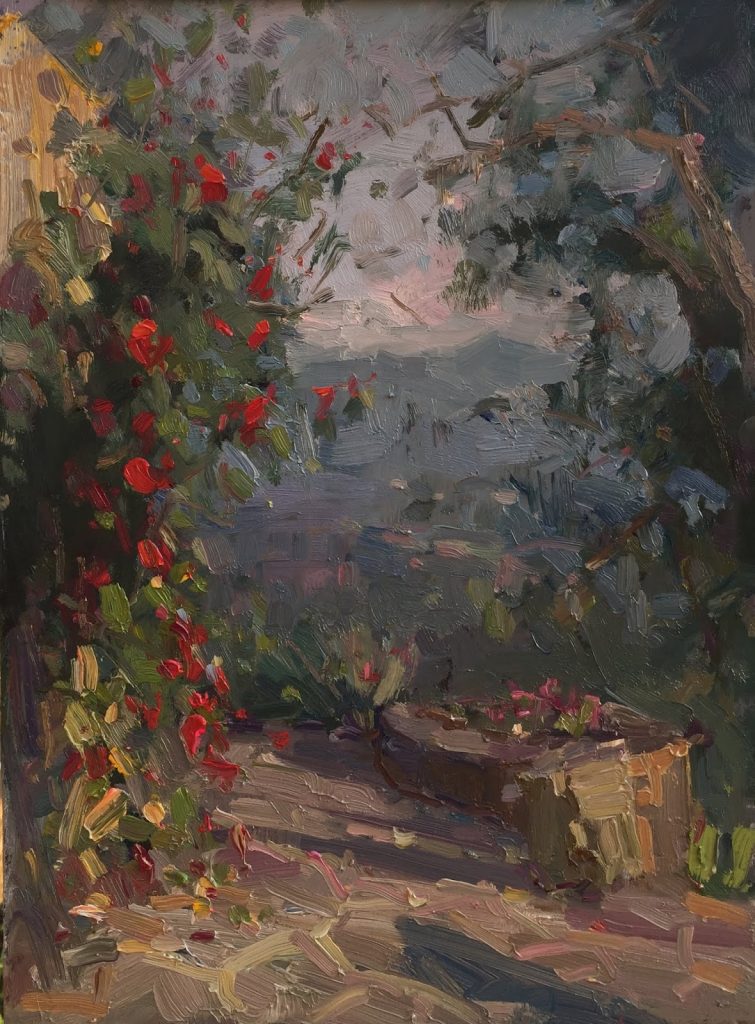
Examples Of Old Masters Focal Points In Art
Here are some old master paintings where you can clearly see they have used one of the above techniques for adding a focal point in their art.
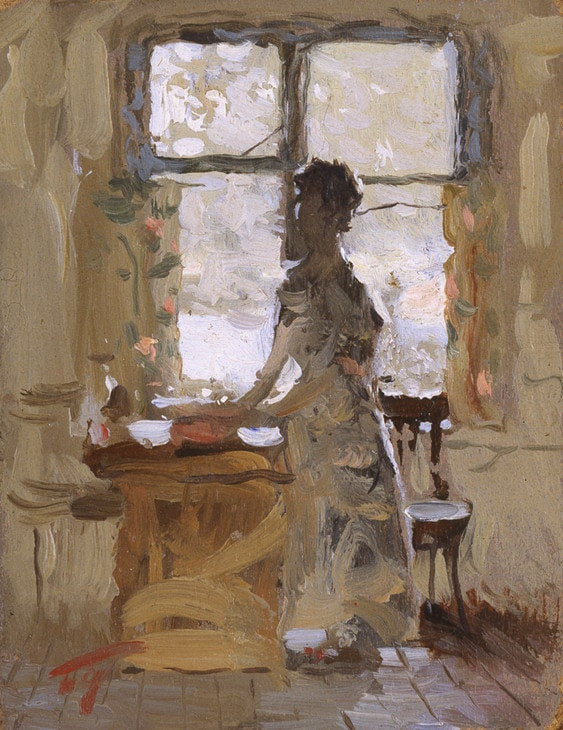
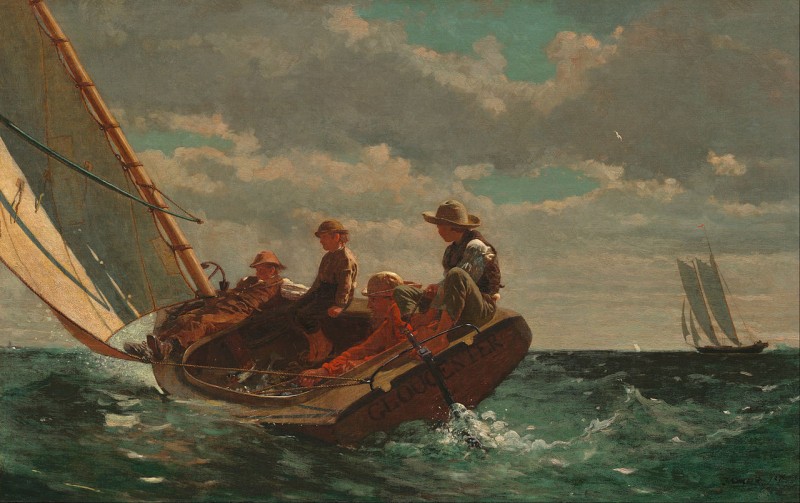
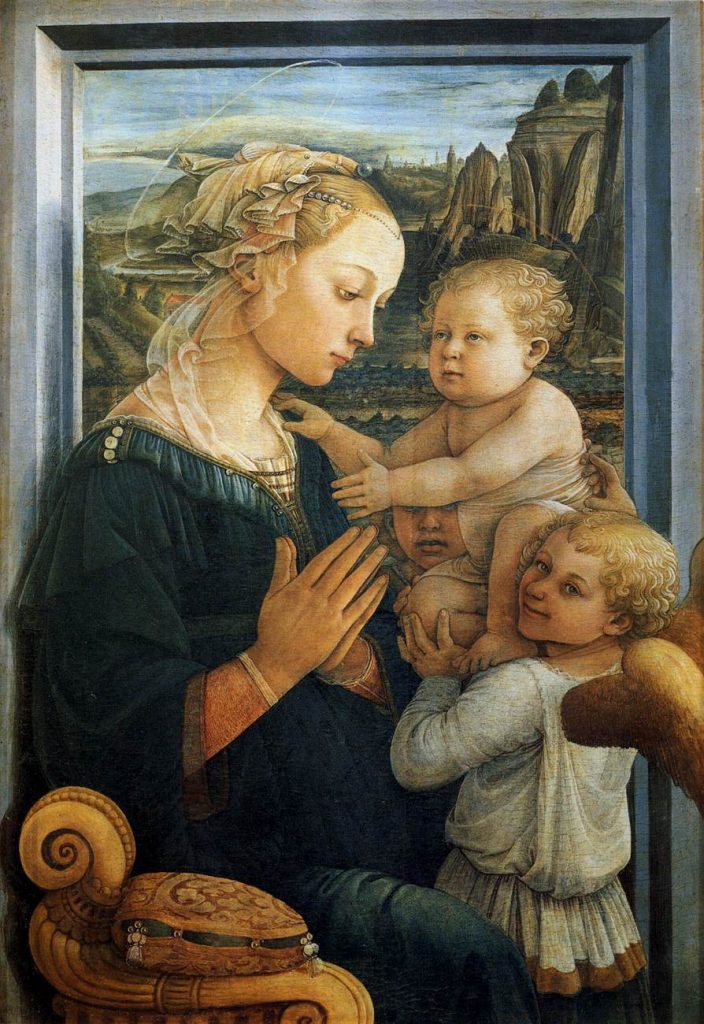
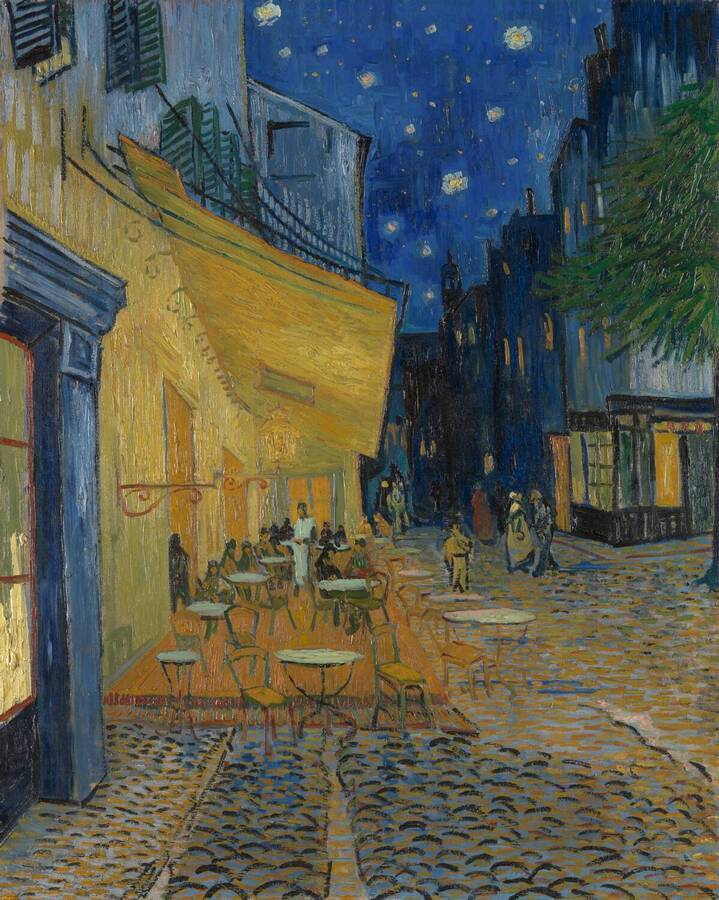
Learn more about using the focal points in art
I hope you enjoyed this article on how to create a powerful focal point in art.
To learn more about how to create and effective and powerful focal point in art, plus other great compositional techniques, see the lessons in Workshop C of the Virtual Art Academy Apprentice Program.
Also see Wikipedia: composition in art
Thank You
Thank you for taking the time to read this article. I hope you find it useful. If you would like to get free painting tips by email, please sign up for my free tips newsletter.
If you are interested in a structured approach for learning how to paint, take a look at my online painting classes.
Happy painting!
Barry John Raybould
Virtual Art Academy
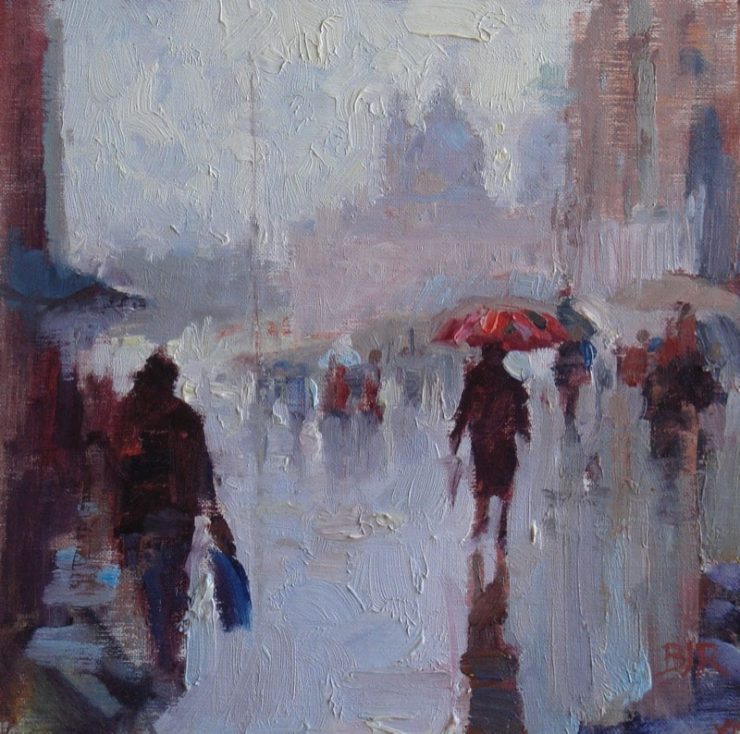




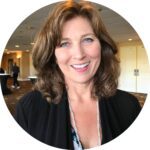
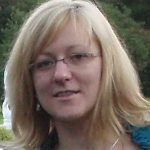



Thank you for sharing this article. The tips in it and everything else I am learning in the online classes are a real eye opener. This is all crucial education I needed to improve my painting skills.
nicely done guys, I like it..
A very well done lesson, thank you for sharing it.
thank you Gianfranco